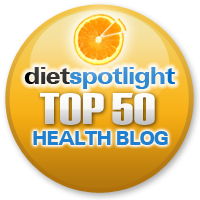Carbohydrates Harm our Immunity to Disease
The high level of sugar in modern diets has been of concern for many years, mainly because of its contribution to malnutrition by replacing more essential nutrients. But, while this is an important consideration, there is more to this trend.
The big killers up to the early Twentieth Century were diseases caused by bacteria and viruses. These were largely eradicated by better public sanitation and housing, and clean water supplies. After WWII, with the widespread use of antibiotics and vaccination, it was thought that infectious disease could be conquered. But over the last half of the Twentieth Century, we have seen an increase in previously 'conquered' or rare diseases, such as tuberculosis, meningitis, influenza and even the common cold.
In the constant fight against disease, our bodies have a sophisticated defence mechanism - our immune system. Part of this system are cells called neutrophils , a type of leucocyte or white blood cell, which circulate in our blood streams and mop up any bacteria or other foreign bodies they come across. This process is called phagocytosis . While phagocytosis is an energy requiring mechanism that needs an adequate supply of the blood sugar, glucose, (1) too much glucose has the effect of reducing the neutrophils' ability to ingest and kill off invading bacteria. (2) (3)
The measure of how many organisms one leukocyte can eat in an hour is called
the '
leukocytic
index
' (LI). It is a simple measure: if a leukocyte eats 10 organisms in an hour,
its leukocytic
index is 10.
The neutrophils that we rely on to kill any invading bacteria and viruses form
60% - 70% of
the white blood cells in our bodies. They are generally much more active than
any other blood
cell. It can be disastrous to our health, therefore, if their effectiveness is
compromised in any
way. But this is exactly what happens if we eat too much carbohydrate and too
much sugar in
particular.
By 'sugar' I do not mean just the white, granulated stuff we serve from a bowl on the table; this is called 'sucrose' but the term sugar applies to glucose, fructose (fruit sugar), maltose (grain sugar), honey (a mixture of glucose, fructose, sucrose and dextrin).
Test results
In a 1973 study, after an overnight fast and after their leucocytes had been tested for phagocytosis activity and their leukocytic index (LI) had been recorded, subjects were fed 100 grams of a specific carbohydrate (a sugar or starch). The table below shows that all forms of carbohydrate — starch as well as sugars — reduced the neutrophils' effectiveness at destroying bacteria and other micro-organisms. (2)
| Fasting level of LI | Lowest point of LI |
Decline % |
Time before returning to normal | |
| Glucose | 16.2 | 9.6 | 40.5 | More than 5 hours |
| Fructose | 15.5 | 8.5 | 45.1 | More than 5 hours |
| Sucrose | 15.2 | 8.6 | 44.0 | More than 5 hours |
| Honey | 15.9 | 9.7 | 39.0 | More than 5 hours |
| Orange juice | 16.6 | 9.6 | 42.1 | More than 5 hours |
| Starch | 15.7 | 13.6 | 13.4 | More than 5 hours |
Note that the worst sugar was fructose — the sugar found in fruit, although high-fructose corn syrup is worse.
This study was confirmed in 1976 by Ringsdorf, et al.
(3)
They tested the effect of sugar
(sucrose) by giving their subjects 24 ounces of sugar sweetened Cola. In this
test the
leucocytic index of all their subjects was reduced by 50%. In other words, the
ability of their
disease-fighting blood cells was halved.
Diabetics
Diabetics should be particularly careful not to consume much carbohydrate-based food, particularly any that is sweetened, as they have been found to have impaired phagocytic activity when compared to normal subjects, and are thus at significantly greater risk. (4) (5) (6) (7)
Consequences
Based on these studies, any person who eats largely carbohydrate-based meals,
particularly
those containing sugars, and snacks with small carbohydrate-based meals spread
throughout
the day — as the latest advice suggests we should — could lose up to half
their immunity to
disease for much of the waking day.
No wonder cancers and infectious diseases are increasing.
References
1.
Cohn ZA, Morse SI. Functional and metabolic properties of polymorphonuclear
leucocytes.
1. Observations on the requirements and consequences of particle ingestion.
J Exptl Med
1960; 111: 667
2.
Sanchez A, et al. Role of sugars in human neutrophilic phagocytosis.
Am J Clin Nutr
1973;
26: 1180-84
3.
Ringsdorf WM jr, Cheraskin E and Ramsey RR jr. Sucrose, Neutrophilic
Phagocytosis, and
Resistance to Disease.
Dent Surv
1976; 52 (12): 46-48
4.
DaCosta JC, Beardsley E. The resistance of diabetes to bacterial infection.
Am J Med Sci
1908; 136: 361.
5.
Richardson R. Measurement of phagocytic activity in diabetes mellitus.
Am J Med Sci
1942;
204: 29.
6.
Schauble MK, Baker RD. The inflammatory response in acute alloxan diabetes.
AMA Arch
Pathol
1957; 64: 563.
7.
Bybee JD, Rodgers DE. The phagocytic activity of polymorphonuclear leukocytes
obtained
from patients with diabetes mellitus.
J Lab Clin Med
1964; 64: 1.
Last updated 12 April 2002
Related Articles
Why You Shouldn't Eat Five Portions of Fruit and Veg?
Where did this "eat five portions of fruit and veg a day" come from?
Study finds more fruit and vegetables no better for breast cancer survival
Study finds that fruit and veg do not reduce heart disease risk





